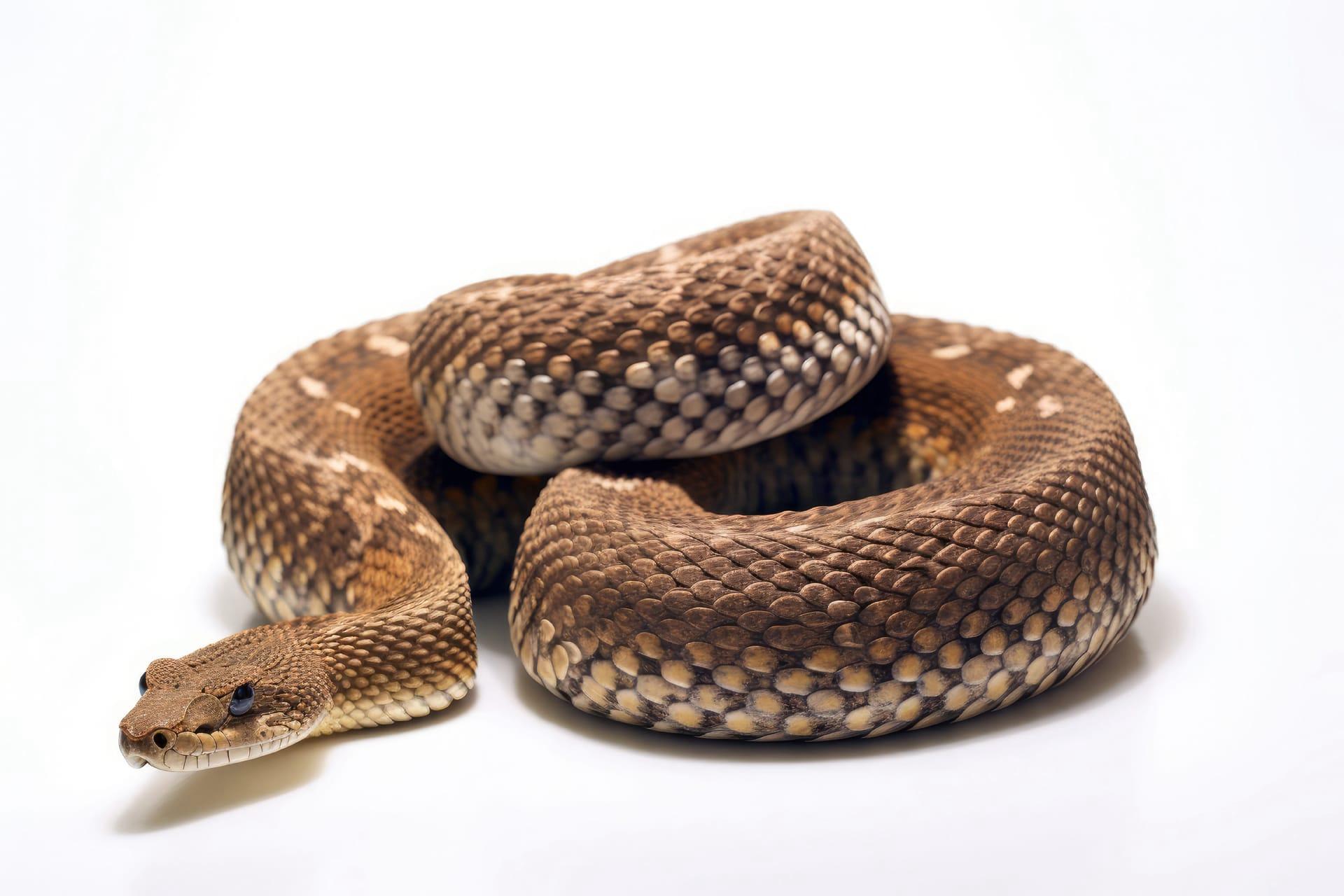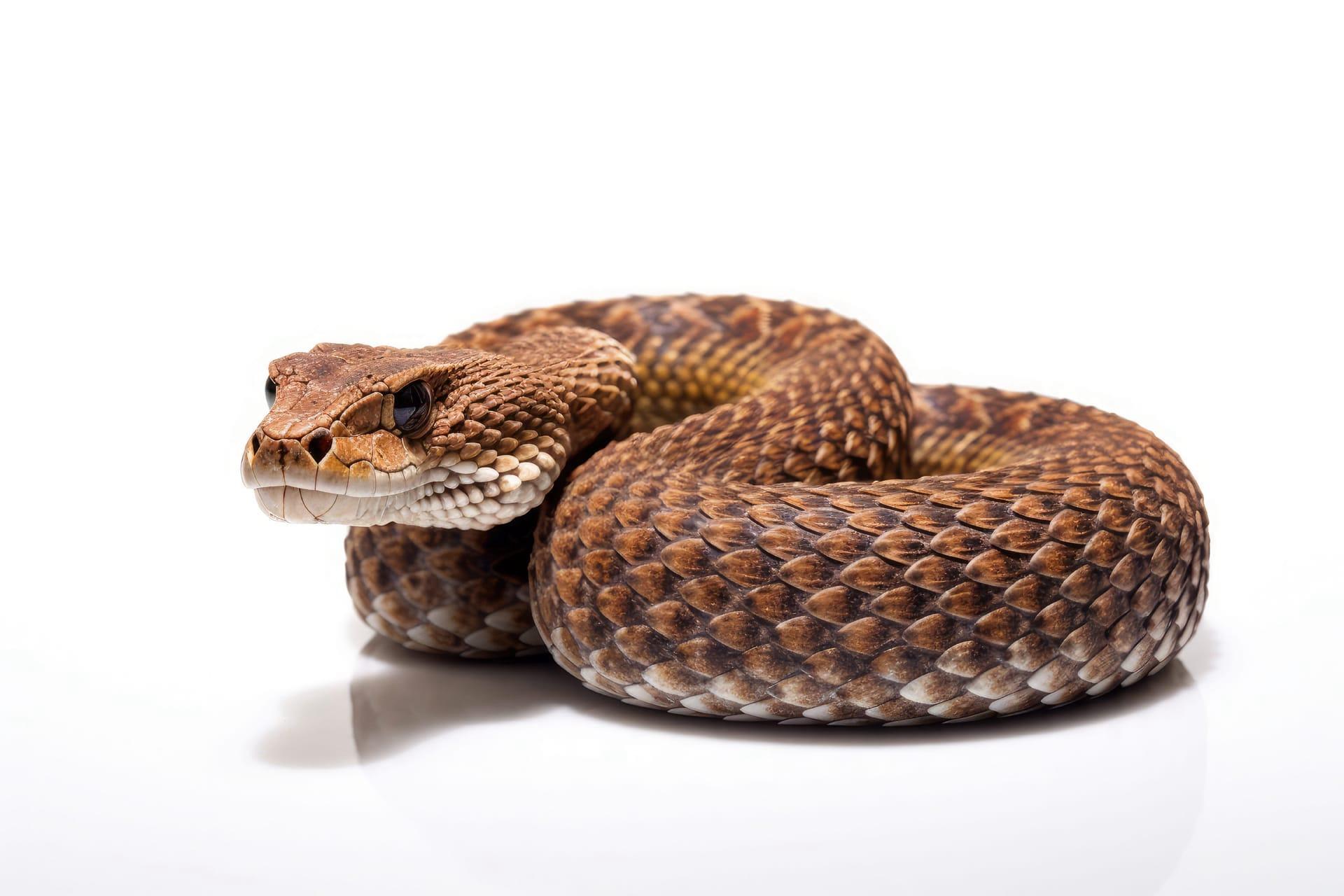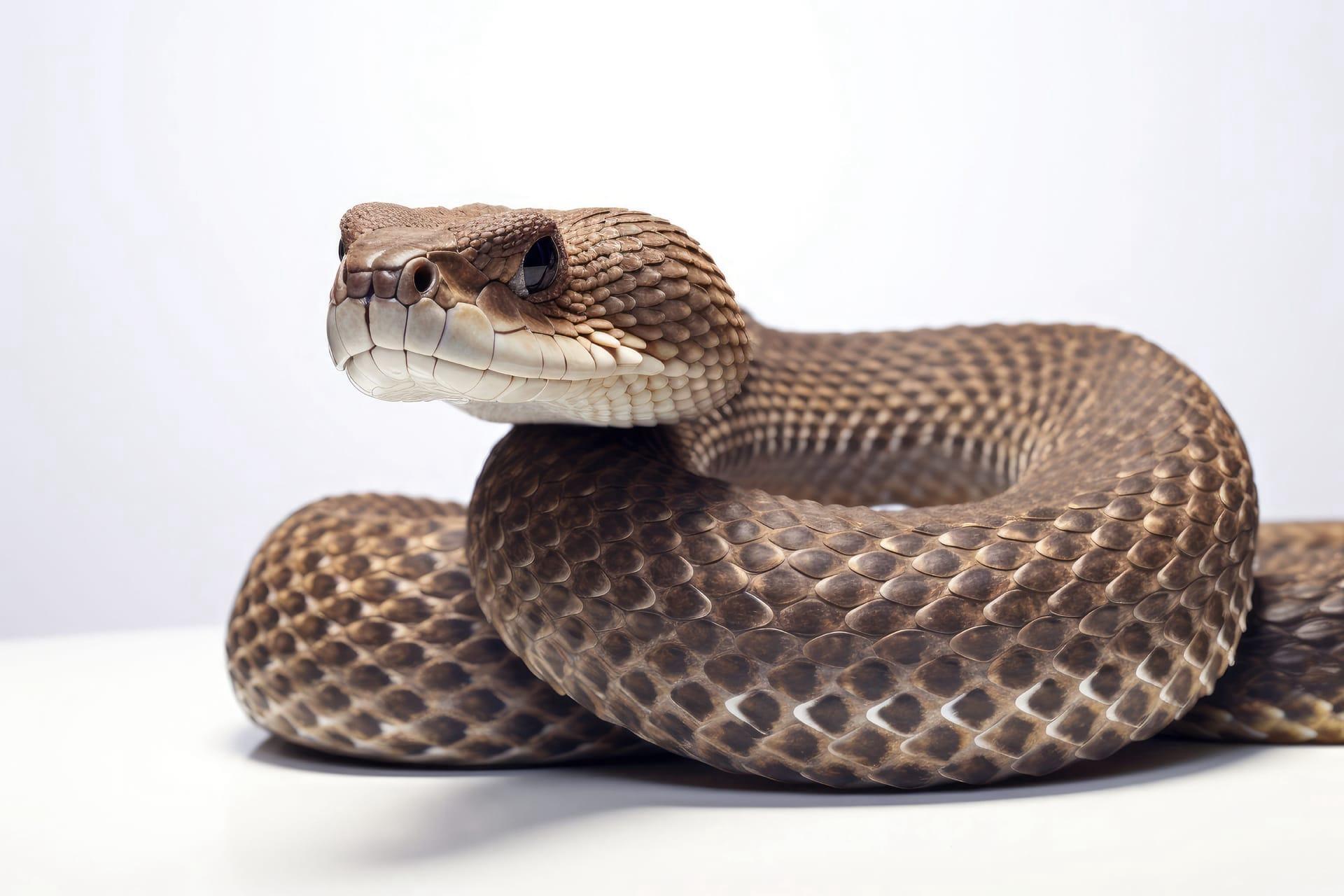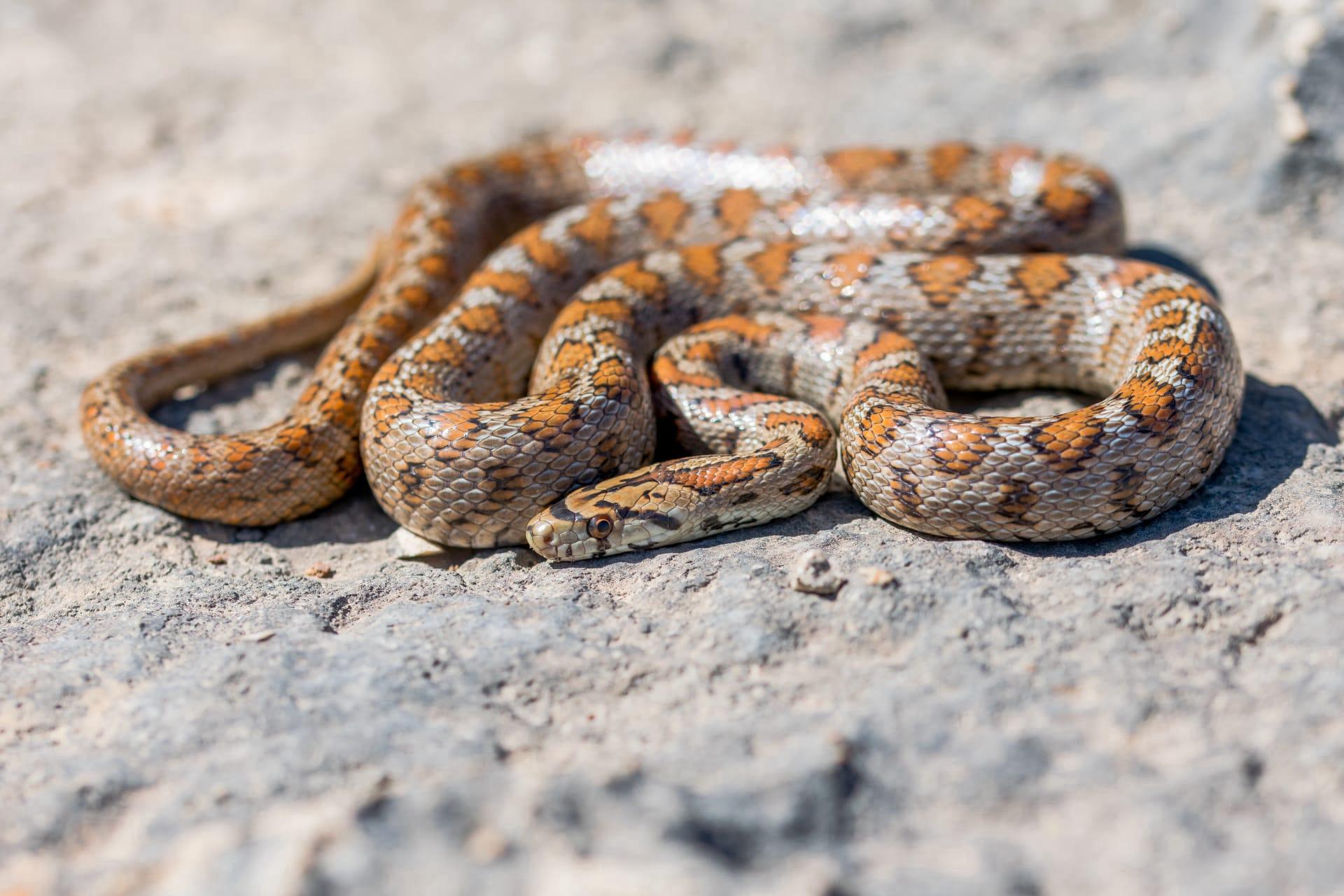Diamondback Rattlesnake Trivia
- Home /
- Trivia Question /
- Animal /
- Diamondback Rattlesnake Trivia
1
Question: How long can a Diamondback Rattlesnake grow, and what is its average size?
Answer: Diamondback Rattlesnakes are among the largest rattlesnakes. They can reach up to 8 feet in length, but on average, most adults are between 3 to 5 feet. Their hefty build is equally impressive, with some weighing over 10 pounds. Size, however, can vary based on their habitat and diet.
Question: What unique features distinguish the Diamondback Rattlesnake from other rattlesnake species?
Answer: The Diamondback Rattlesnake is easily identifiable by its distinct diamond-shaped patterns along its back. These patterns are bordered by lighter scales, creating a striking contrast. Another hallmark is its rattle, composed of interlocking segments that create a buzzing sound when vibrated. This rattle grows a new segment each time the snake sheds its skin, which can be several times a year.

2
Question: Is it true that the Diamondback Rattlesnake always rattles before striking?
Answer: Contrary to popular belief, Diamondback Rattlesnakes do not always rattle before striking. While rattling is a common warning behavior, these snakes can strike without giving any audible warning, especially if they feel immediately threatened or startled.
Question: Do Diamondback Rattlesnakes chase humans?
Answer: No, Diamondback Rattlesnakes do not chase humans. This is a common misconception. They are defensive, not aggressive, creatures. If they sense a threat, their instinct is to either remain still and camouflaged or to rattle as a warning. They prefer to avoid confrontation and will only strike if they feel cornered or directly threatened.

3
Question: What do Diamondback Rattlesnakes eat and how do they hunt?
Answer: Diamondback Rattlesnakes primarily feed on small mammals like rabbits, squirrels, and mice. They are ambush predators, lying in wait for unsuspecting prey. They use their heat-sensing pits located near their nostrils to detect warm-blooded prey, striking with lightning speed and injecting venom to subdue their meal.
Question: How does the Diamondback Rattlesnake's venom work?
Answer: The venom of a Diamondback Rattlesnake is a complex mixture of enzymes and proteins. It works by breaking down blood cells and tissues, causing swelling, hemorrhage, and intense pain at the bite site. The venom can be fatal to small animals and, if not treated, potentially dangerous to humans. However, with prompt medical treatment, fatalities in humans are rare.

4
Question: Where are Diamondback Rattlesnakes commonly found?
Answer: Diamondback Rattlesnakes are native to the southeastern United States. They are commonly found in states like Arizona, New Mexico, Texas, Oklahoma, and North Carolina. Their preferred habitats include dry, sandy areas, scrublands, and rocky hillsides. They are also known to inhabit areas near human settlements, like farms and the outskirts of suburbs.
Question: How do Diamondback Rattlesnakes adapt to different seasons and temperatures?
Answer: Diamondback Rattlesnakes are ectothermic, meaning they rely on the environment to regulate their body temperature. In hot summer months, they become nocturnal to avoid extreme heat. During cooler seasons, they often brumate (a form of hibernation) in shared dens, emerging during warmer parts of the day to bask in the sun and maintain their body temperature.

5
Question: How does the Diamondback Rattlesnake reproduce?
Answer: Diamondback Rattlesnakes are ovoviviparous, meaning they give birth to live young after carrying eggs inside their body. Mating occurs in the spring or fall, and females can store sperm for months before fertilization. Gestation lasts about six to seven months, culminating in the birth of 10 to 20 live young, each about 10 inches in length.
Question: Can Diamondback Rattlesnakes swim, and are they found in water?
Answer: Surprisingly, Diamondback Rattlesnakes are quite capable swimmers and can be found crossing bodies of water. They swim by undulating their bodies in a serpentine motion. While they prefer dry land habitats, they are not averse to water and can occasionally be seen swimming in lakes, rivers, or even coastal saltwater environments.